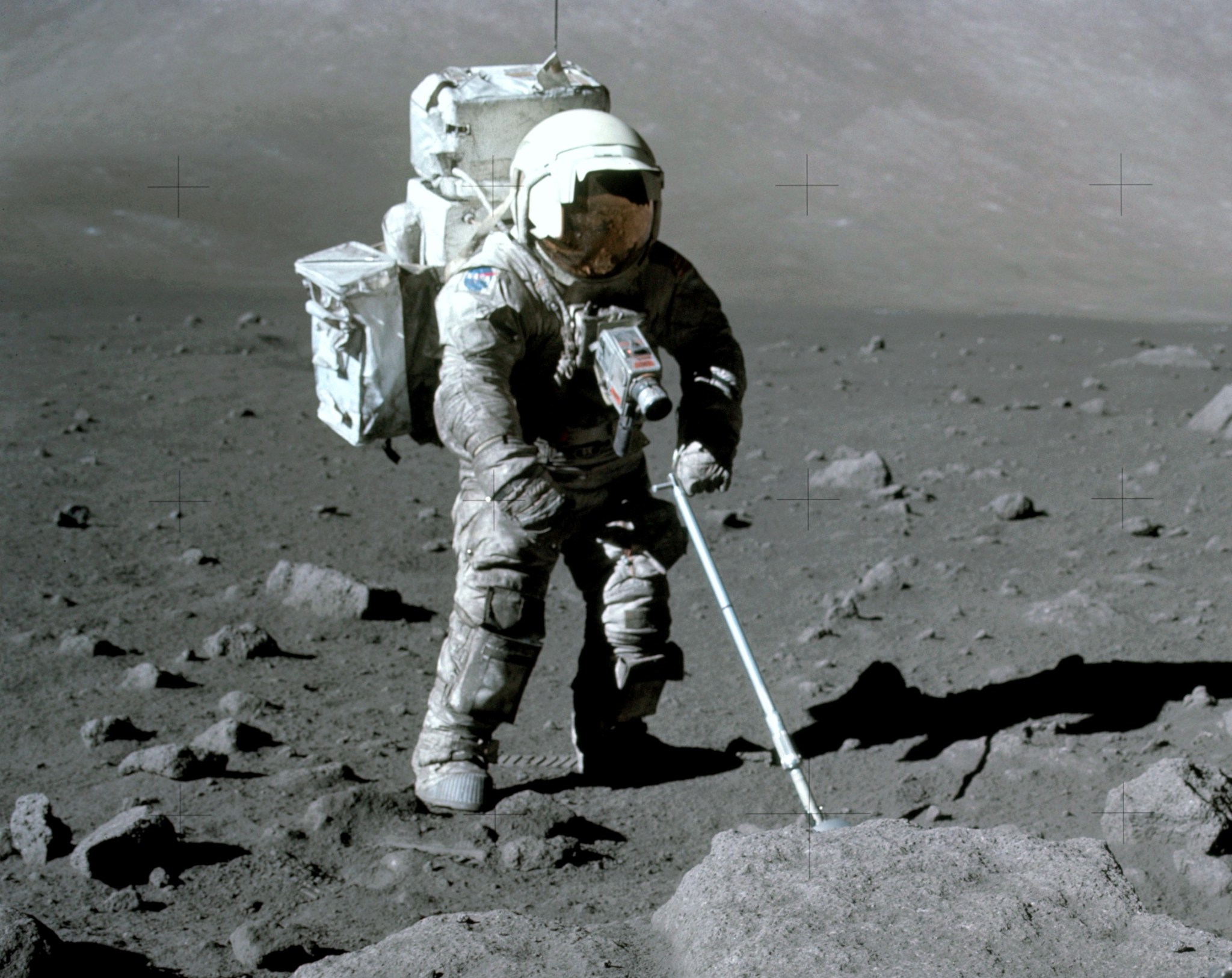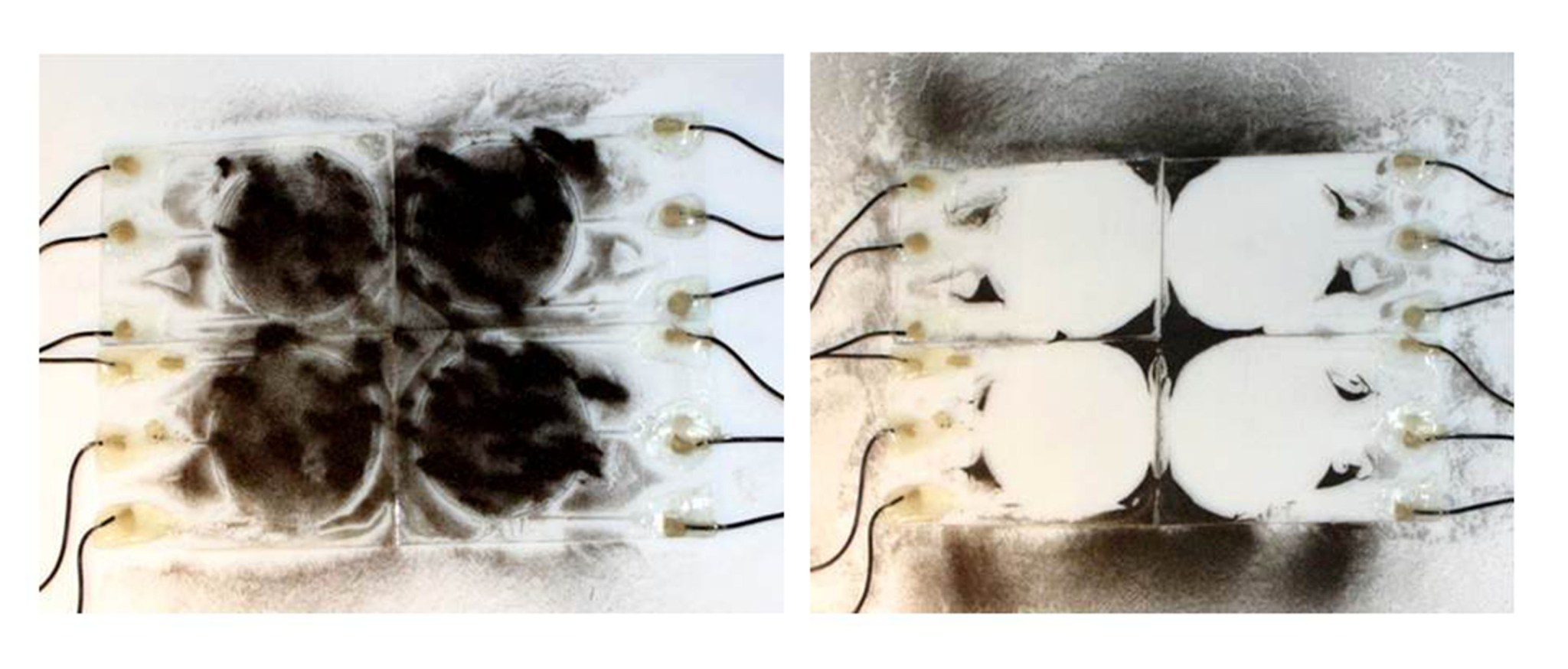One of the challenges in exploring the moon or planets is dust kicked up by engines during landing or activity on these distant worlds. Scientists in the Electrostatics and Surface Physics Laboratory at NASA’s Kennedy Space Center in Florida are developing ways to mitigate this problem.
Electrodynamic dust shield, or EDS, technology is based on concepts originally developed by NASA as early as 1967 and later by the University of Tokyo. In 2003, NASA, in collaboration with the University of Arkansas at Little Rock, started development of the EDS for dust particle removal from solar panels to be used on future missions to Mars.
Dr. Carlos Calle, lead scientist in Kennedy’s Electrostatics and Surface Physics Lab, is developing instrumentation to deal with the problem of electrostatic dust phenomena during future planetary exploration missions.
“Our laboratory is now developing an electrodynamic dust shield to prevent debris from accumulating on various surfaces,” Calle said.
Long-term testing is planned for an experiment being developed for launch to the International Space Station aboard a SpaceX Dragon resupply mission in 2015.
“Our payload called Electrodynamic Dust Shield for the Materials International Space Station Experiment-X, or MISSE-X, will be mounted on an external station platform to verify the effects of the space environment,” he said. “The electrodynamic dust shield experiment will contain four panels and an electronics control box. Testing will include a transparent EDS for optical systems and solar panels, two EDS panels for thermal radiators and an EDS on fabric for spacesuit dust protection.
“What we learn on the space station experiments should allow us to be better prepared to mitigate dust problems the next time humans visit another planet.” Calle said,
Many of today’s state-of-the-art digital, single-lens reflex cameras include a similar device to periodically vibrate, shaking dust off the light sensor that creates the photographic image. However, Calle explains the EDS does not actually vibrate.
“This technology works by creating an electric field that propagates out like the ripples on a pond,” he said. “This could prevent dust accumulation on spacesuits, thermal radiators, solar panels, optical instruments and view ports for future lunar and Mars exploration activities.”
Much of this research is a follow-up to lessons learned from the lunar missions of the early 1970s.
The final three Apollo lunar landing missions included three moonwalks of up to seven-and-a-half hours. Astronauts said the soil was as fine as talcum powder and stuck to their pressure suits and helmet visors.
“Jack Schmitt said that on Apollo 17 he had to keep brushing the dust off his visor,” Calle said. “By the end of the third moonwalk, his glove had so badly scratched the visor that it was difficult to see.”
Harrison “Jack” Schmitt was the lunar module pilot on Apollo 17, which landed on the moon in December 1972. He and mission commander Eugene Cernan spent over three days on the lunar surface. They and other Apollo astronauts reported they were not able to leave the dust problem outside.
“On each landing mission, the Apollo crews related they tried to brush off the moon’s dust,” Calle said, “but a good bit of it stayed on their space suits. Once inside the atmosphere of the lunar module, it floated around where it could be inhaled. That’s not a serious problem for a three-day stay, but during a three-month expedition on a lunar base, it could become a health hazard.”
With the electrodynamic dust shield embedded in the fabric of future space suits, particles can be removed by applying an electric field to these electrodes to remove dust and also prevent its accumulation.
“So far, our testing has shown the electrodes can remove most of the dust,” said Calle. “The electrodes are made from different conducting films. These thin wires are imbedded in surfaces such as fabrics and can be made transparent on clear surfaces for optical devices, windows, visors, thermal radiators or solar panels.”
These applications would be helpful with the type of dust problems that affected Mars Exploration Rovers Spirit and Opportunity, which landed on the Red Planet on Jan. 4 and Jan. 25, 2004, respectively.
“Unlike the moon, Mars has an atmosphere which blew dust on to the solar panels of Spirit and Opportunity,” Calle said. “Both robotic probes could have been jeopardized. Fortunately, that same atmosphere created dust devils that blew much of the dust off. This kept the rovers going.”
A dust devil is a small whirlwind over land, visible as a column of dust and debris. They are not phenomena to be dependent on as future missions may not be as fortunate, thus requiring mitigation technology.
“We believe electrodynamic dust shield devices could protect the solar panels from dust accumulation,” Calle said.
Extensive testing in simulated laboratory environments and testing on a reduced gravity flight show that high levels of dust can be removed.
“To simulate the conditions of space, our tests have been performed in both a vacuum and low gravity,” said Calle. “We call it the Reduced Gravity Flight Experiment.”
A vacuum chamber was flown on one of NASA’s aircraft that flies steep dives, creating brief periods simulating the one-sixth Earth gravity of the moon and the Martian gravity that is about 38 percent of Earth’s. Under these conditions, layers of dust were placed on materials embedded with electrodynamic dust shield devices.
“When activated,” Calle said, “99 percent of the dust was removed from the surfaces protected by the dust shields.”




























